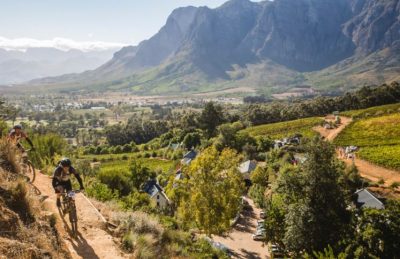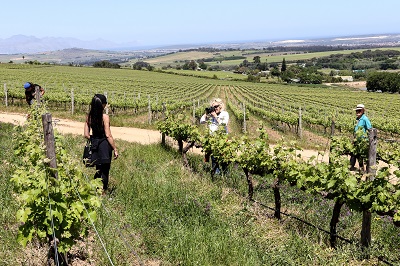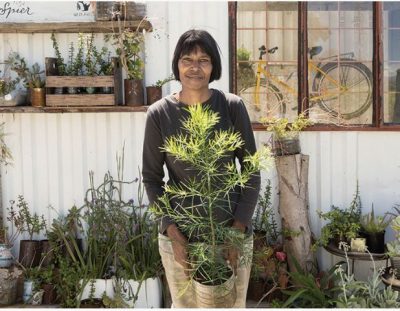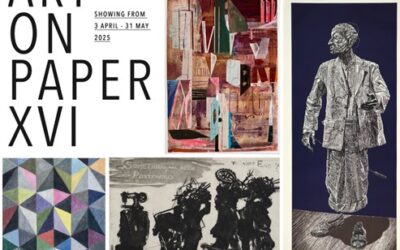A lot more happens in the winelands than wine production and fine dining, writes Nontando Mposo, who participated in the Nedbank Green Wine Awards “amazing race”..
There are families, generations of workers raising children that grow up not being exposed to much other than life in the wine farms…where nothing much happens in terms of recreational activities. There is also a group of people behind the scenes, who work tirelessly with limited resources to ensure that the children are educated and taken care of healthwise, such as the Pebbles Project.
The organisation runs mobile computer labs and nutrition and book library programmes that reaches hundreds of children in the winelands.
I visit their bright yellow mobile trucks at the Villeira Wines in Stellenbosch, as part of a group of media participating in the Nedbank Green Wine Awards “amazing race”.
We spend out time at the farm learning about the Pebbles Project work and we pack school packs containing essentials such as basic stationery as part of the competition.
The rest of the day is spent visiting three other wine farms in the area who are listed in the Cape Town Green Map Nedbank Green Wine Award Winners Route.
The map offers environmentally conscious wine lovers a unique journey of discovery by highlighting all wine producers in SA that are committed to environmentally responsible wine production. The map is also part of the global Green Map System network that connects more than 800 cities, towns and communities in over 60 countries.
As part of the festivities, we learn about fynbos at Bartinney Wines while sampling their wines. We also enjoy a delightful walk through their charming garden. Bartinney is carbon neutral and has a zero carbon footprint in terms of both farming and wine making….50 percent of the farm’s power needs are generated by means of solar
installations.
At the 2015 Green Wine Awards winners for the best red organic wine Reyneke farm, which overlooks Stellenbosch and False Bay we spent about an hour tiding their vineyards under the scorching sun. Their vineyards are herbicide, pesticide and fungicide free and the farmers use companion planting, rather than poisons, to control weeds, while an army of ducks keeps the snail population in check.
We end the day with a lunch at Spier’s farm-to-table eating experience called Eight. Spier is the 2015 Green Wine Awards winners in the category for leadership in water conservation. The farm boasts a centralised water treatment plant that recycles waste water and uses it for irrigating the gardens and grounds… a first of it’s kind in South Africa. When it was originally commissioned, the plant processes up to one million litres of wastewater at any given time.
Also worth knowing about Spier is their Tree-preneurs programme, which teaches community members how to care for indigenous trees and plants.
Participants are given seedlings to nurture and, once these have grown to 30cm high, they can be exchanged for vouchers to pay towards food, clothing, agricultural goods, tools, bicycles and educational support.
The full results and a competition overview are available in South Africa’s Green Wine Guide 2016, bagged with the this issue of Getaway and results are also available here.
This report by Nontando Mposo first appeared in the Cape Argus
The Cape Town Green Map covers estates that have won Nedbank Green Wine Awards from 2011 to 2016.
The Cape Town Green Map Nedbank Green Wine Route showcases estates that are Conservation Champions
Twitter: @GreenWineAwards
#GreenWineAwards










